Content Marketing: The Complete Guide
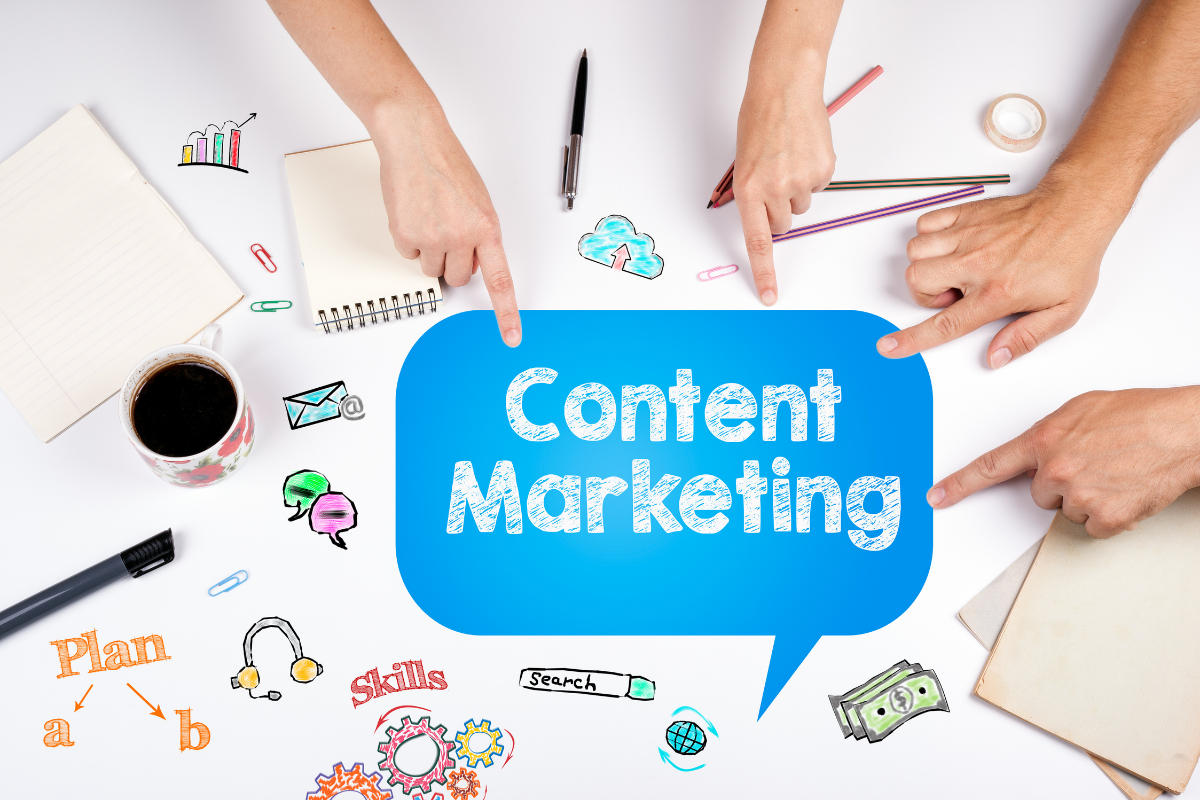
"Content marketing is the only marketing left," according to Seth Godin, the 'godfather of modern marketing.' (1) Today, modern business can't survive-- let alone thrive-- without utilizing this powerful method of marketing.
But doing so can be a tricky thing to get right. Optimizing your strategy so that it has broad appeal while remaining unique and personal is a tall order.
Read on so that you can hit the ground running with content marketing and avoid the most common pitfalls.
What is Content Marketing?
According to the Content Marketing Institute, "Content marketing is a strategic marketing approach focused on creating and distributing valuable, relevant, and consistent content to attract and retain a clearly defined audience — and, ultimately, to drive profitable customer action." (2)
The CMI was founded in 2011, and continues to serve its original purpose today: advancing the practice of content marketing by providing in-person events, digital events, and online education.
Even through the pandemic, the CMI has continued to provide literal masterclasses in content marketing. If we should consider anyone's definition complete, it's theirs.
It may surprise you, then, to learn that one of the earliest content marketing campaigns started in the 19th century... long before the CMI was founded.
History of Content Marketing
One of the earliest (and most talked-about) content marketing strategies was introduced in 1895. (3) At that time, John Deere began publishing a quarterly magazine, named The Furrow.
Unlike magazines published by other companies at the time, The Furrow wasn't a catalog. Instead, it was one of the earliest steps towards getting a business and its customer engaged in a conversational dialogue.
The magazine didn't contain a single John Deere ad or proclamation. All of the content was helpful tips for customers, resources they may not have known about, and articles related to agriculture.
And at the peak of its popularity, The Furrow had over 4 million subscribers. (4)
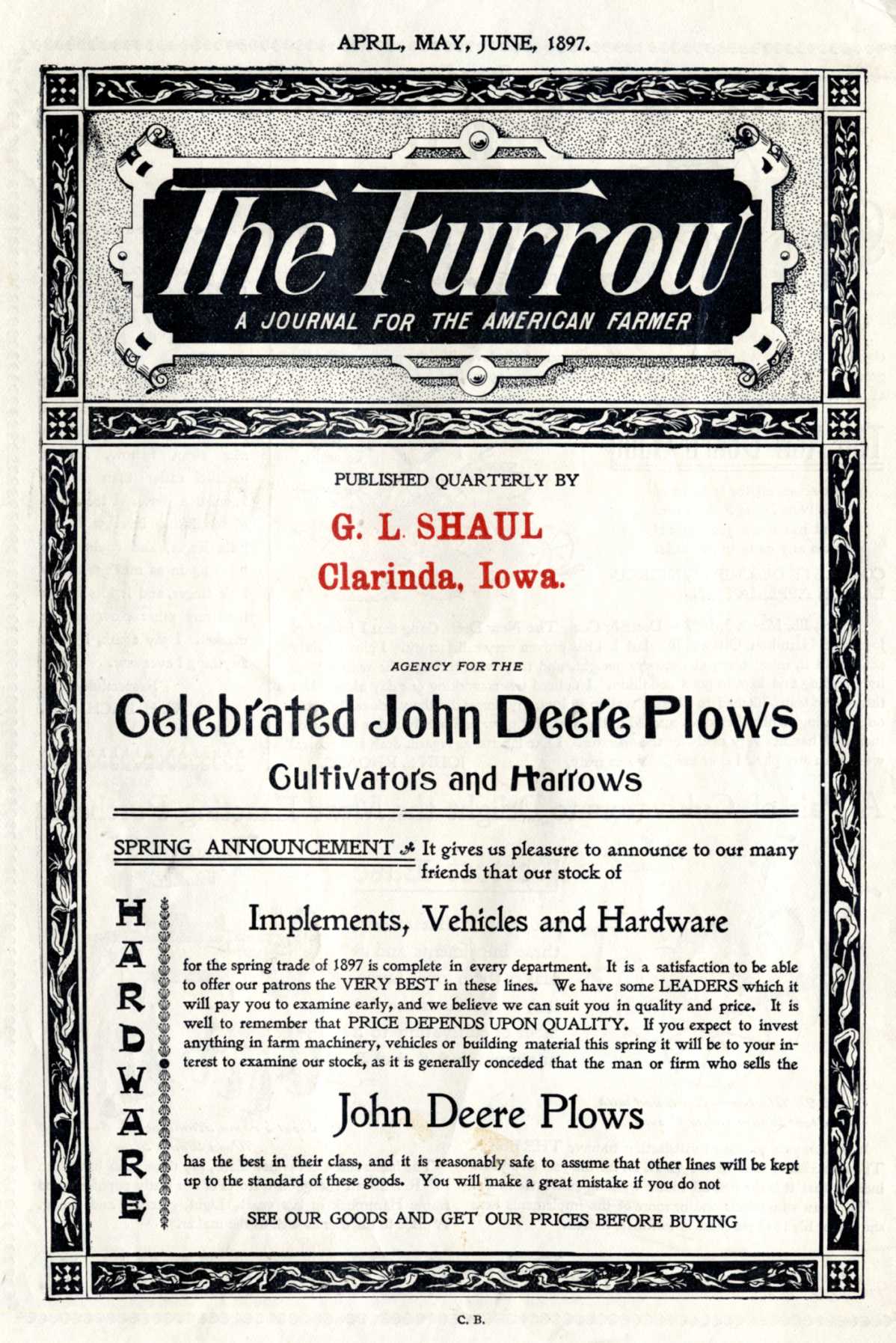
This goes to show that even as far back as the 1800s, people didn't like to be sold. Today, flashy advertisements and grandiose statements don't attract nor interest people.
What people do want-- back then and today-- is helpful information. They want assistance with their problems. They want to know that their pain points are understood, and to be given a solution.
It's no wonder content marketing is just as important to a company today as it was upon its creation... if not more so.
Types of Content Marketing
Today, content marketing is largely separated into two categories: digital and traditional.
Most content marketing today is digital, especially as the pandemic has driven so much commerce and engagement to online spaces. But there's still a place for traditional content marketing, especially with certain demographics. (5)
Examples of non-digital content marketing include...
- Informational mailer magazines
- Free recipe books or other niche-relevant publications
- Pop-up experiences in strategic locations
Or anything unique, helpful, and physical you come up with, really. More and more, people are looking for memorable, meaningful ways to connect with brands.
A unique idea or experience could be the next viral marketing campaign... without ever being online.
What is Digital Content Marketing?
Digital content marketing, on the other hand, is an ever-expanding list of mediums and portals that allow you to have authentic engagements with customers.
Every day, the minds behind social media platforms are working to create the next way people will communicate. Today, it's TikTok and Instagram Reels. Here are some other long-standing ways to implement content marketing...
- Blogs
- Newsletters
- Youtube channels
- Podcasts
- Infographics
And that's just to name a few! There are as many ways to employ digital content marketing as there are different kinds of personalities in the world.
Examples of Content Marketing
It can be tough to look at any one successful content marketing campaign and distill what made it successful.
While it's true that most of the memorable attempts are effective, original, and helpful or inspirational... those aren't the only boxes you have to check. (6)
Sometimes, a content marketing strategy is so bizarre, random, or different that it takes an audience by storm. Here are some examples of both ends of the spectrum, in digital and traditional mediums.
Canva's Design School
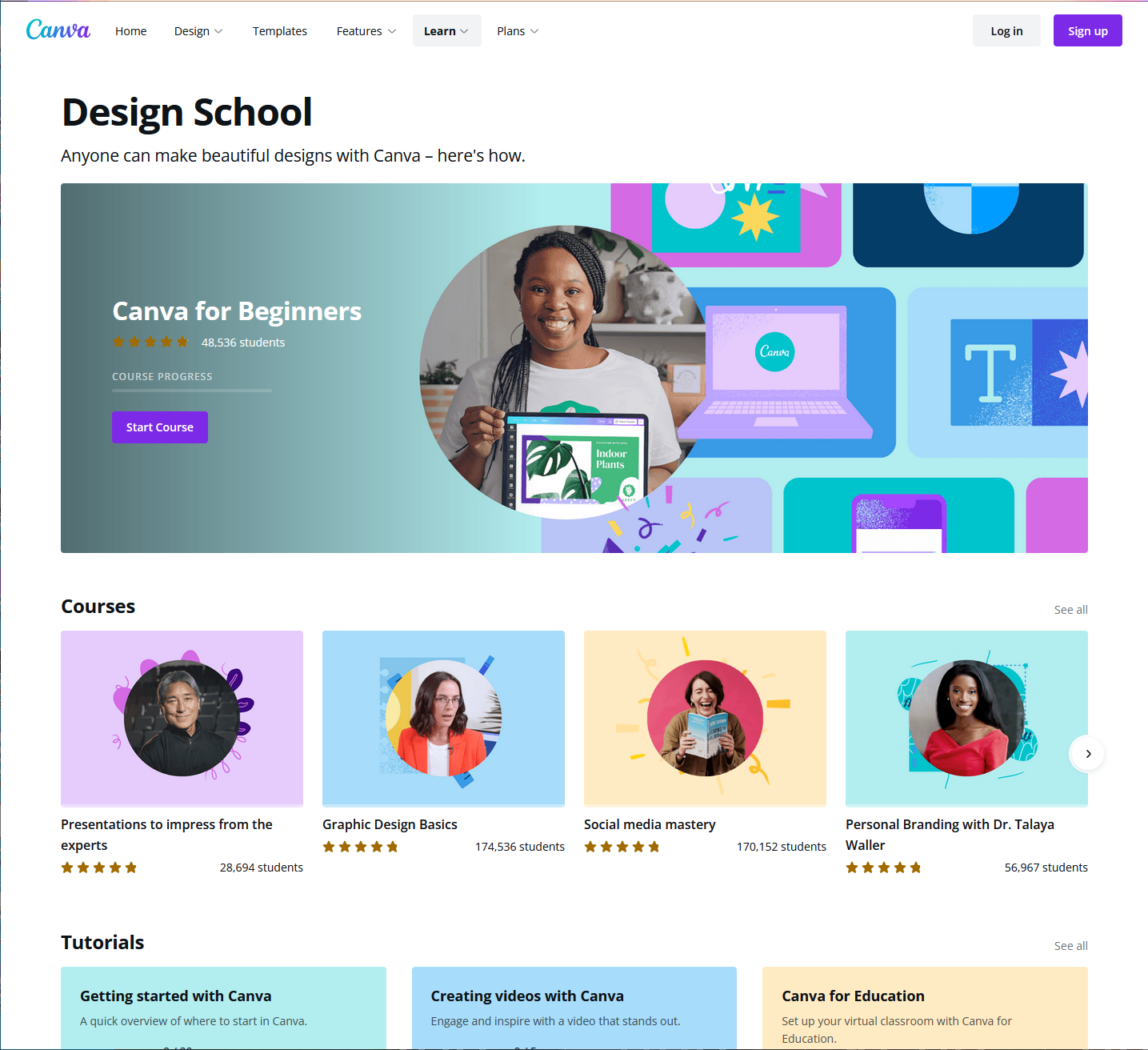
Canva is a web-based app for graphic design. While they offer paid memberships, users can access basic tools for free... including Canva's Design School.
Canva's Design School is exactly what it sounds like: a hub of video tutorials and lessons so users can get the most benefit from using Canva.
So why is this a great example of content marketing? If you've been following along, you can probably name the biggest reasons:
- It's helpful and educational
- It provides real-world insights that viewers can immediately implement
- Tutorials also touch on how versatile, accessible, and convenient using Canva is
In short, Canva's Design School content marketing strategy makes the viewer the center of attention, solves their immediate problem, AND subtly positions Canva as the ongoing solution to those same problems.
I know what you're thinking, and you're right. Tutorials and how-to videos are a great foundation for almost any content marketing strategy!
Blendtec's Will It Blend? Videos
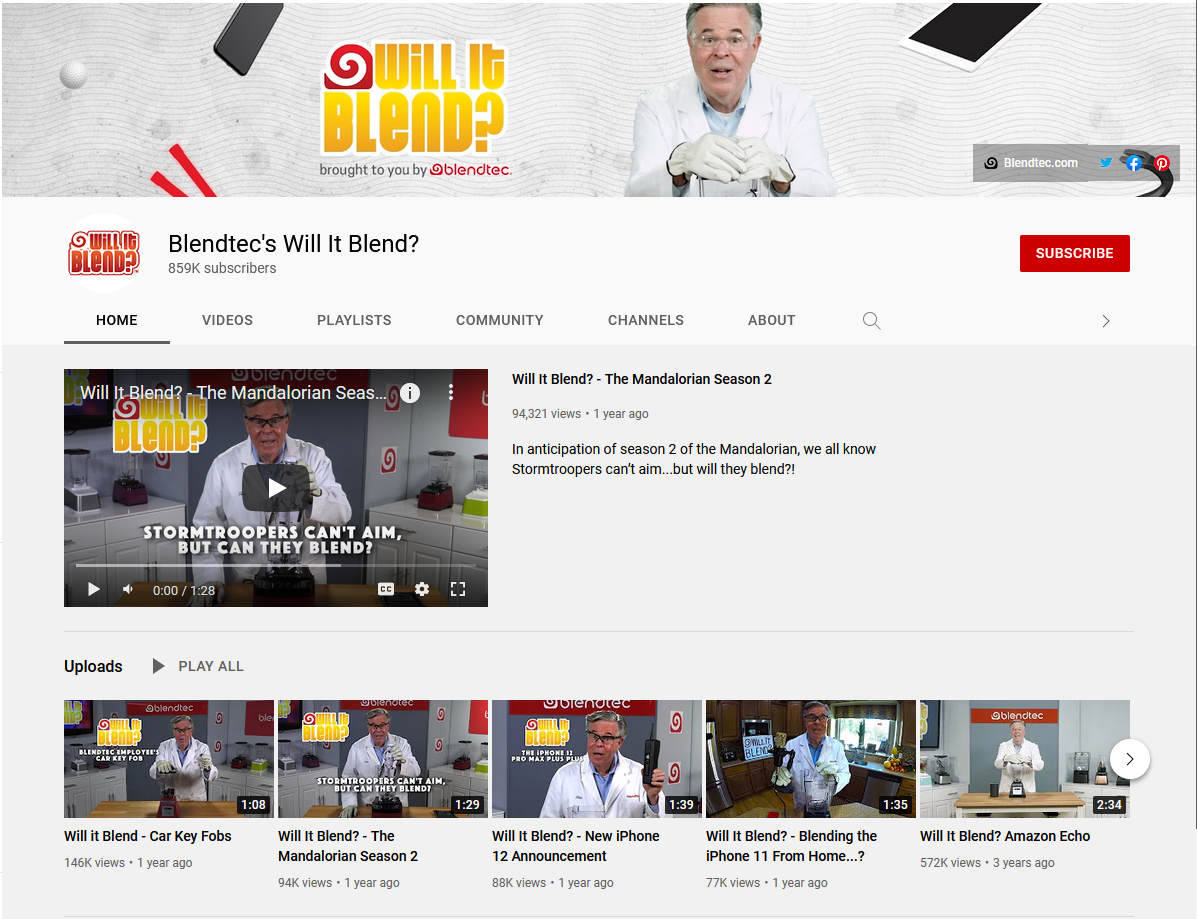
This content marketing campaign enjoys the unusual duality of being quirky and unique, but broadly appealing at the same time.
If you had any kind of regular internet access in the mid-2000s, it was hard to miss these videos.
The Blendtec company, in order to raise awareness and build credibility, launched their "Will It Blend?" video campaign in 2006.
And it spread like wildfire. Teens and adults alike discussed these underground-- and yet known-by-all-- videos as if they were part of a secret society.
Suddenly, everybody knew just how rugged Blendtec blenders were. They became a household name. And Blendtec achieved it by posting these videos that never included a sales pitch, a price point, or even a model number of the blender being used.
The reasons for this content marketing campaign's inconceivable success are nuanced, but not as "out there" as you might think.
On a basic level, Blendtec is still making the customer their center of attention. But rather than trying to solve their problems, the company is simply trying to entertain.
And who doesn't appreciate when someone goes out of their way to entertain? It's human nature to "lean in" and focus more when someone wants to serve you in a purely entertaining fashion.
The psychological genius and pure quirk of this campaign are why it's one of my top three examples of content marketing.
Jell-O's Free Recipe Books

Everyone has heard of-- and almost definitely eaten-- Jell-O over the course of their lives. But did you ever wonder how Jell-O accomplished this?
The company did it with another now-famous content marketing strategy. They started by publishing free Jell-O recipes in women's magazines in the 1930s and 40s.
Especially considering all the rationing housewives had to do during that time, it's no wonder Jell-O became a household name. There wasn't a family in the country that couldn't benefit from their ration-stretching recipes.
And, of course, every recipe included Jell-O... meaning a purchase for the company anytime one of their recipes was followed.
They quickly began publishing entire Jell-O cookbooks with savory recipes, and mailed the cookbooks out free of charge. And their success continued to explode because of this wise content marketing strategy.
Again, it's easy to see why this campaign was so wildly successful. Jell-O made these women the center of their attention, solved their most pressing problems, and positioned Jell-O as the obvious solution to those problems.
The cherry on top? Just like Canva, since the information is free of charge, the reader immediately sees you as more caring and invested than your competition.
What is Not Content Marketing?
According to the Marketing Insider Group, content marketing is a strategic solution to a strategic problem. (7)
This means that individual pieces of content do not add up to a content marketing strategy. A smattering of social media posts, blogs, and podcasts certainly does check the "content" box...
But without a strategy, you're just throwing spaghetti at a wall. And there's nothing optimal or efficient about that. It certainly isn't content marketing.
In a more literal sense, ads are also not content marketing. Whether the ads are PPC, running on Facebook, Google, or the radio, they aren't content nor content marketing.
Why? Because the methodology of an ad campaign versus a content marketing campaign are completely different. You're activating different parts of the human brain with each. By their very nature, neither campaign can serve the role of the other.
 Every single one of these is an ad, not content.
Every single one of these is an ad, not content.How Content Marketing Works
So, what is the role of content marketing? Alexander Santo from Brafton Marketing Agency said it best.
"A traditional advertisement tells consumers what a company does and how it does it.
Content marketing shares knowledge and actionable insights that help consumers understand why they should take action." (8)
And as John Deere discovered in 1895, people don't like to hear much about what a company does. They do like helpful information and knowledge that enables them to improve their lives.
I'm often asked "Why is content marketing important?"
The simplest answer is... People like to be the center of attention.
More importantly, they like to buy from a business who makes them feel like the center of attention.
This is why content marketing works, and why it's become the cornerstone of how businesses reach their ideal customers today.
How Long Does Content Marketing Take?
This is the second most common question about content marketing, beaten only by "Does content marketing really work?"
I get it. These days, we have to constantly be on the lookout for ways to create leverage in our businesses. Any campaign that resembles filling a bucket which has a small hole in the bottom is just not going to work in these modern times.
According to Carol Ann Tan, an expert in digital marketing for women-owned businesses, "For a small to medium-sized business, a strong content marketing strategy generally takes between six and nine months to yield real results." (9)
This is why it's so important to think in terms of a "content marketing strategy" instead of simply "content." You could post "content" regularly for 6 to 9 months, sure.
But if you aren't targeting specific portions of your funnel and specific demographics, you might as well be lighting money on fire.
Invest a bare minimum of 6 months into your content marketing plans. Ideally, you want to put together a plan for the coming calendar year before the current year is over.
Why? Because thinking about your content marketing in terms of "6 months at a time" is the same as telling yourself "I'm going to go to the gym every day for 6 months. After that, I won't need to work out ever again."
With an attitude like that, there's no point in even starting.
What Marketing Goals Can Content Marketing Serve?
Another question I hear often is, "How does content marketing drive growth?"
Quite simply, it plays off of human nature. Humans, by their nature, feel positive emotions when they learn something-- especially something immediately useful to them.
This is proven when you examine high-growth companies vs average-growth companies.
High-growth companies blog over 2X more than their average-growth competitors. They also use social media (Twitter, Facebook, and Youtube) over 2x more than those same competitors. (10)
You can view all this data in the graph below.
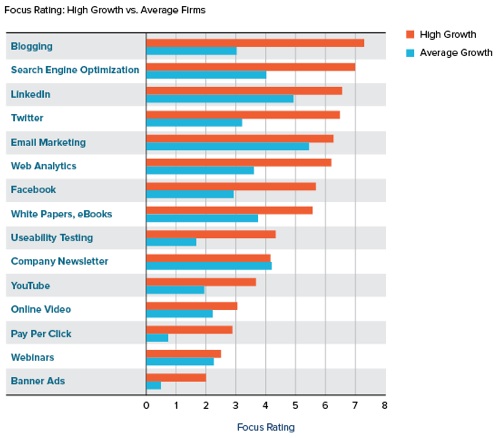 Graph by www.benchmarkemail.com
Graph by www.benchmarkemail.comBut what other KPIs can you create with content marketing? There's actually quite a lot you can focus on:
- Long-term lead generation
- Increasing or maintaining brand authority
- Boosting new customer revenue
- Growing your email subscriber lists
- Improve your customer loyalty and retention
- Creating interest groups so you can retarget when needed
- Ranking higher in search results via SEO-optimized content
It's really up to you and your team. You can choose to pursue any combo of (or all of) these goals. What's really important is that everyone gets on the same page about your content marketing goals.
Useful Content Should Be at the Heart of Your Marketing
Now you know all the goals your business can achieve with a solid content marketing campaign.
But did you know your content marketing strategy can help you achieve internal goals, too?
When you have a cohesive strategy, it saves time for every department and member of your business. And this extra time can be put towards many meaningful, impactful tasks:
- If you publish comprehensive FAQs and tutorials, customers can reference them instead of tying up your customer service teams.
- If you publish content that generates new leads, your sales team can focus on moving customers through the funnel instead of getting new leads.
- Good content about your company values can help attract potential new employees, saving you time on manual recruiting.
As you can see, a good content marketing strategy is a rising tide that lifts all boats!
How To Get Started with Content Marketing
Content marketing is such a plug-and-play strategy that it can be overwhelming to get started.
When it's up to you to decide how many mediums of content you'll be creating... and how often... and which portions of your funnel to target at which times... it's like being at a crossroads with hundreds of directions to go.
But don't be discouraged. Getting started is easier than you think.
The most important thing to do is focus. Focus on your goals and on determining which medium is best for your ideal customers.
If your demographic prefers blogs, start with a content marketing strategy that utilizes blogs to get started.
If your demographic prefers a weekly email, or Youtube videos, etc... get started there. While you're at it, scope out your competition. Specifically, check out any competitors that are killing it in Google results and on their engagement platforms.
If your competition is doing something their customers love, odds are you can do it better.
As far as generating the content, use the same strategy. Some demographics love tutorials and how-to articles. Others like behind-the-scenes content. And a fair few just like a good belly laugh each morning.
Determine what works, and what makes your ideal customers feel like the center of the universe. Then start putting it all together into an executable strategy.
Creating a Content Marketing Strategy
According to Seismic, the #1 global sales enablement leader, there are 11 must-have components to any successful content marketing strategy. (11) Here are my top five:
- Your brand guidelines. Your brand must have a clear tone, voice, and personality. If it doesn't, your content pieces will be disjointed and ineffective.
- Buyer personas. All of these pieces are designed for people to enjoy, so make sure you know how to talk to your people. Determine the age, gender, location, education, household income, family status, and job title of your typical customers. It's very common to have multiple buyer personas depending on the size of your audience.
- Your objectives. There's no point in setting goals that aren't measurable. So take note of your objectives for brand awareness, lead generation, or any objective you've decided to pursue.
- Funnel awareness. Be aware of every stage of your funnel. (For example, awareness - considering purchase - making purchase - delivery - retention.) Plan content that addresses each demographic in each stage to ensure maximum results.
- Content planner. It's not enough to put in all this work and let your team run with it. Once a strategy containing goals, personas, objectives, and funnel awareness is established, the content itself must be planned. Create a calendar or planner that considers topics, campaigns, and who is assigned each piece. This will help ensure a successful roll-out of your new strategy.
What Are Content Marketing Tools?
Even though it's easy to talk about the components of good content marketing, it can be much harder to automate and optimize those components.
Luckily, content marketing has become so important for businesses that tools have been created by many companies.
There are a plethora of platforms, apps, and tools-- and endless combinations of them to address your needs.
It's typically easiest to determine your campaign's goals, how you'll measure those goals, and which mediums (including social media platforms) are best-liked by your buyer personas.
Once you know what you want to achieve and how, it's easy to find platforms to help you.
What Are the Best Content Marketing Platforms?
Neil Patel wrote a great article on his favorite content marketing tools and platforms. I was happy to see that my favorites are some of his favorites.

Evernote is a great tool for note-taking. If you need a way to get your ideas out of your head, into a place where you (and your team) can access them anywhere... even on-the-go.
It's accessible for multiple users across all devices, and you can even clip images and pages from the web for reference later.

Canva is a web-based app I use every day (including the above-mentioned Design School). If you need to create custom images/graphics and want easy access to your brand's colors, fonts, and branding, Canva is your new best friend... and it's less than half the cost of Photoshop.
You can use it to schedule posts in advance too, making it a huge asset for any content marketing strategy.

Mailchimp is the ongoing champion of email marketing. And email marketing is the ongoing champion of content marketing strategies. Year after year, email marketing has the highest conversion rate vs social media and other methods.
Mailchimp is free up to a certain number of subscribers and it's accessible via mobile and desktop. It's a great, low-barrier way to start your content marketing campaign.
Mailchimp has added so many great features over the last few years. My favorites are monitoring metrics like open and click rates, unsubscribe rates, and new subscriber rates.
Expert Tips for an Effective Content Marketing Strategy
We've covered so much in this article. You now know...
- What content marketing is, and its history
- Examples of wildly successful traditional and digital campaigns
- How content marketing can make you more money and make your employees more productive
- Elements of a successful content marketing strategy
- Tools and platforms to make sure your content will hit the ground running
All you need now are the following expert, takeaway tips you can implement immediately.
1. Don't shy away from long-form content. In most cases, Google won't take your blog, article, FAQ, etc seriously if it's shorter than 400 words.
Additionally, your content should be about the same number of words as similar pieces which rank highly on Google.
Let me say that another way. If you know your customers want to read about "how to start a garden in your backyard," and the pieces in the top 3 spots on Google when you search "how to start a garden in your backyard" are all about 2,000 words...
...Then your piece needs to be about the same amount of words. So don't try to "summarize" if other popular articles/blogs on the subject are long.
2. Personalize your content. We've talked a bit about tone, voice, and language. The importance of keeping this consistent can't be overstated! Figure out how your buyer personas talk. Find out which words and phrases they use... and which ones they hate.
Speaking to your audience like a friend-- a friend who talks like they do-- is a surefire way to improve customer loyalty and attract new customers.
So ditch the articles written like your college essays. Get on their level with personalized, engaging content that truly speaks to your audience.
3. Tools are what sets humans apart. It can be tempting to do all of your content marketing manually. And I can see why you'd think doing so would save you money.
But when it comes to content marketing platforms, you're shooting yourself in the foot if you pass them up completely. You don't need to shell out hundreds of dollars in membership fees, either.
Most of the top platforms (including Canva and Mailchimp) have a free tier. I highly recommend getting the ball rolling with free accounts, and upgrading to paid memberships if you start to see results from the free tier.
Because if your customers don't read emails... and you start sending emails with Mailchimp... paying for a Mailchimp membership will not magically make your audience read their emails. You'd be better off trying other mediums until you find the winner, and invest in that one.

Content marketing is a wide and diverse playing field, to be sure. But it's also an absolute necessity for any business in these modern times.
And now you're ready to strategize like the best of them!
Contact me if you'd like to book a FREE Connecting with Your Ideal Customer Strategy Session.
I also offer FREE quick site audits and FREE quick copy/content audits. You can learn more about my services here.
Rooting for you,

Shelby Dennis
Your freelance beauty copywriter and SEO expert
References:
1. Beacon Media & Marketing, Seth Godin Is Still Right, https://www.beaconmm.com/2020/05/19/seth-gogin-is-still-right-content-marketing-is-the-only-marketing-left/
2. Content Marketing Institute, What Is Content Marketing?, https://contentmarketinginstitute.com/what-is-content-marketing/
3. Copypress, The History of Content Marketing, https://www.copypress.com/blog/history-content-marketing/
4. Julia McCoy, Was John Deere the First Proponent of Content Marketing?, https://expresswriters.com/the-story-of-john-deere-and-content-marketing/
5. Kyle Harper, Can Content Marketing Exist In a Non-Digital Space?, https://www.skyword.com/contentstandard/can-content-marketing-exist-in-a-non-digital-space/
6. James Brockbank, 26 Content Marketing Examples to Inspire Your Team in 2021, https://www.semrush.com/blog/content-marketing-examples/
7. Michael Brenner, Content Marketing Is A Strategic Solution To A Strategic Problem, https://marketinginsidergroup.com/content-marketing/content-marketing-strategic-solution-strategic-problem/
8. Alexander Santo, Here's How Content Marketing Works, https://www.brafton.com/blog/content-marketing/heres-how-content-marketing-works-in-2019/
9. Carol Ann Tan, How Long Does It Really Take For Content Marketing To Work?, https://sprk-d.com/how-long-does-it-really-take-for-content-marketing-to-work/
10. Lee W. Frederiksen, How a Content Marketing Strategy Can Drive Growth, https://www.benchmarkemail.com/blog/how-a-content-marketing-strategy-can-drive-growth/
11. Seismic Sales Enablement, The 11 Essential Elements of a Content Marketing Strategy, https://seismic.com/company/blog/the-11-essential-elements-of-a-content-marketing-strategy/



Comments
Share your question or comment in the box below!